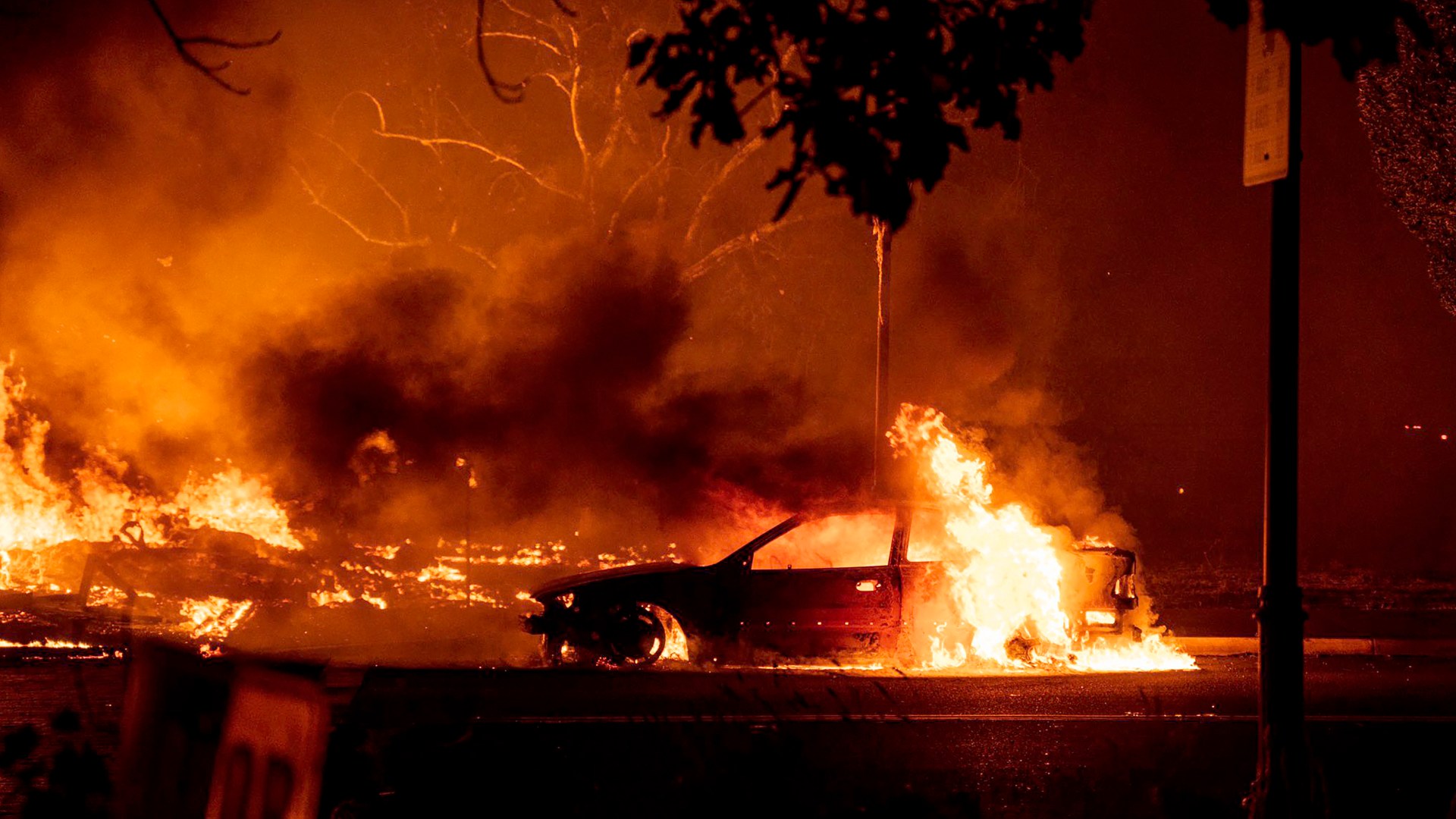September 10 was supposed to be my first day of teaching online. Almost exactly six months before, I stood in a classroom and asked my students if reports of the coronavirus made them feel afraid. It turned out to be the last conversation we would have face to face. That evening, our governor canceled school, and the remainder of the year was eventually scuttled.
Last week was supposed to be a time to establish connection with a new crop of students and to usher in a new kind of normal with virtual teaching. But late Wednesday afternoon in Clackamas County, Oregon, the color of the air changed. I saw great orange-gray billows piling up over the roof, and the sun looked like a red eye blinking down through the haze.
The next day, smoke poured in, obscuring first the distant hills, then the nearer hills, then the trees at the end of our street. Finally, at 2 o’clock that afternoon, when local officials moved the boundary of the evacuation zone from five miles away to five blocks away and as ash began to drift down onto our laurel hedges, I decided to pack up my kids and go. I filled my car with birth certificates, photo albums, and computers and then drove away, trying to stay ahead of the encroaching flames.
The West Coast fires aren’t the first disaster of this year. As the calamities pile up, my friends and I keep saying to one another, “2020!” As if this year is a one-off. As if, when the calendar turns to January 1, 2021, our troubles will be over. But as the year drags on, I’m finding it harder to hope for the possibility of better times anytime soon. What if 2020 is not an anomaly but a bellwether? What if the problems accumulating now—climate change and racial reckoning, political division and disease control—get worse before they get better?
As I drove up the freeway surrounded by smoke and bumper-to-bumper traffic, unable to see the mountains and trees, unable to see the water under the bridge as we crossed from Oregon into Washington, I thought of the Israelites in the desert, wandering along after the pillar of fire and the cloud of smoke. They’d had a doozy of a year themselves. Some of the plagues had been reserved for the Egyptians, but other hardships had fallen on the Israelites: the late-night escape, the pursuing army, and the walk through the middle of a sea.
When they began to follow God into the desert, they had no idea that 40 years would pass before they emerged. Would it have been better if they had known? Probably not. They didn’t need to see the end from the beginning. All they needed to see was where God led. All they needed to watch was the movement of the cloud. “At the Lord’s command they encamped, and at the Lord’s command they set out” (Num. 9:23).
In these days of 2020, we are all a bit like the ancient Israelites: evacuees from the world as we knew it, headed out into the unknown. We still write things on our calendars, of course. We cast our visions and make our plans. In past years, some of us have gotten away with imagining that the pages of those planners depict the future with accuracy. But 2020 has laid bare the truth that our times have always been in God’s hands. What will happen next year or next week? Will school be canceled by a pandemic or a wildfire? What disaster will strike next? We cannot know.
I used to wonder why God chose to appear to the Israelites by day in a cloud of smoke. A pillar of fire, at least, gives light and heat. Smoke, on the other hand, reduces visibility. It disorients and obfuscates. But on that long freeway drive, I saw the symbolic purpose of smoke: It forces us to admit that we can’t see where we’re going, and it forces us to rely on God.
I’m not suggesting that the wildfires plaguing my beloved home state are a gift from God. No, fires and viruses and all manner of natural disasters are clearly evidence of a sin-sick and groaning creation. But our God is a creative God who works good even from calamity, and trust is the good that I see God working in my own heart in the midst of this terrible year. I’ve learned it the hard way, which might be the only way.
For now, my family and I are far from home. After we crossed the border into Washington and the smoke thinned a bit, we pulled off at a rest stop. There were lots of cars with Oregon plates—cars stacked with Rubbermaid totes that were full, I imagined, of birth certificates and photo albums and computers. One family leaned on the doors of their car, reaching for the five pizza boxes they’d balanced on top. Several of us walked our dogs in the grass. As we passed each other wearing our cotton masks, I could sense what was hidden from view: astonishment and relief, uncertainty and fear.
I feel those same emotions as I think about my family’s transitory life. Out here in the wilderness, I’m learning that I cannot know the future, much less control it. But I can hold God’s hand as I inch into the haze.
Sarah Sanderson has an MFA in creative nonfiction from Seattle Pacific University and teaches creative writing and public speaking to K-12 students near Portland, Oregon. Find more on her blog.









